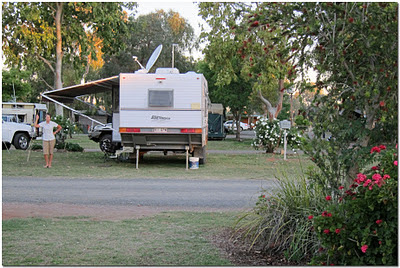We were supposed to meet our friends on Wednesday, 19th October, who live in the Strathbogie Ranges east of Euroa in Victoria. We left Pooncarrie and camped at the Euston Caravan Park to top up our water and do some much-needed washing. We also took a moment to watch the Wallabies lose to NZ. Damn!
Monday 17th October:
Leaving Euston, we carried on east along the Murray Valley Highway before spending the night camping at Lake Barham, which is about thirty-seven kilometres NE of Echuca. Camp #308. The campsite still shows the effects of the floods that happened earlier in the year, with around 75% of the ground still underwater.
Tuesday 18th October:
We had a very short drive today. We were heading to camp at the "Police Paddocks" north of Rutherglen. Campsite #292. The "Police Paddocks" is an island of 405 hectares that was used to stable police horses in the 1880s. It was connected to the mainland by a private bridge over Murphy's Creek, which is an anabranch of the Murray River. It is now part of Gooramadda State Forest. The bridge no longer exists. The photo shows the creek and the island in the background.









































